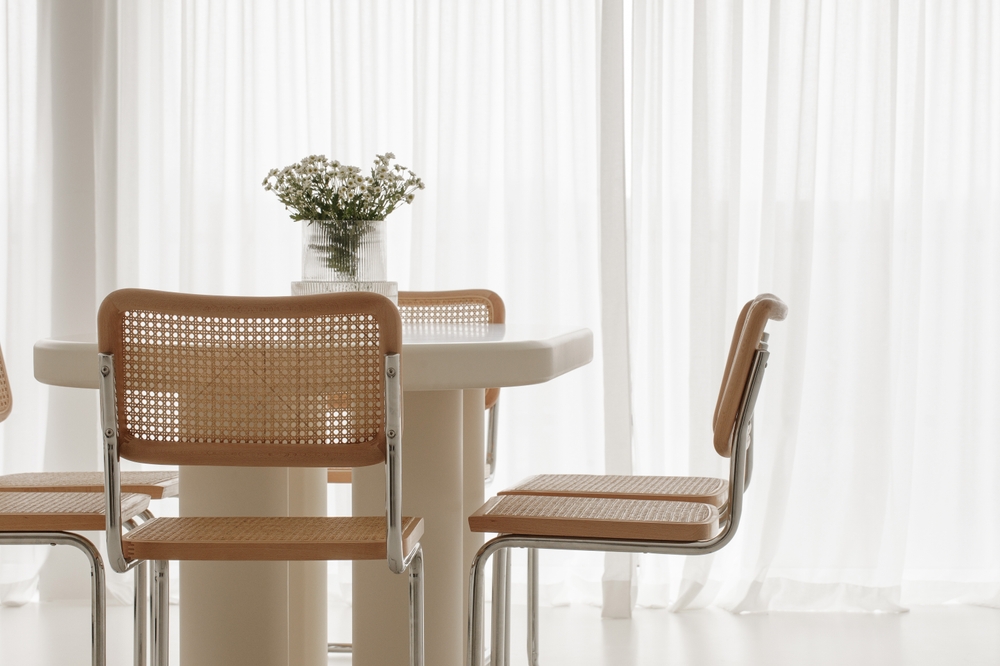Choosing a Dining Room Set: Modern Tables, Chairs, and Furniture
A dining room set anchors both daily routines and special gatherings. When you shop for a set, you’re balancing scale, style, materials, and function: a table large enough for your household or guests, chairs that support comfort and posture, and complementary furniture like buffets or sideboards. This article explains practical choices for selecting a dining room set, what to measure and consider, and how modern design elements affect durability and visual flow in your space.

Dining room layout and sizing considerations
Start by measuring the room and marking the intended dining area before you look at sets. Allow at least 36 inches (about 90 cm) from the table edge to walls or other furniture so chairs can be pulled out comfortably; tighter spaces can work with bench seating or smaller tables. Consider the shape of the room: rectangular spaces often suit rectangular or oval tables, while square or round rooms pair well with round tables to improve traffic flow. Account for additional furniture — a sideboard or hutch requires clearance too — and visualize circulation paths for serving and daily movement.
Choosing dining furniture that fits your lifestyle
Think about how you use the space: formal meals, daily family dining, homework time, or entertaining. If the set will see heavy daily use, prioritize durable finishes and stain-resistant upholstery over delicate veneers. Materials like solid hardwoods, metal frames, and high-quality engineered boards each offer different wear characteristics and maintenance needs. Also consider storage needs: some furniture pieces in a set may add useful storage for linens and tableware. Match the finish and scale of the furniture to existing pieces to create a cohesive room without everything needing to be identical.
Selecting a dining table: shape, size, and materials
Table choice determines seating capacity and room flow. Rectangular tables are versatile for long rooms and expandability; round tables encourage conversation and can squeeze into tighter footprints. Measure table length and width and then add the recommended clearance to ensure the chosen size will fit. Material-wise, solid woods like oak or walnut age well and can be refinished; engineered surfaces and veneers offer cost-effective looks with lighter maintenance; glass or marble tops create a lighter visual feel but require careful cleaning and sometimes more delicate handling. Consider extendable tables for occasional extra seating without permanently occupying a larger footprint.
Picking chairs: comfort, style, and durability
Chairs affect ergonomics and the overall look of the set. Test seat height and depth when possible; the standard dining seat height is about 18 inches (46 cm) from the floor, but variations exist. Upholstered seats add comfort and noise reduction; choose fabrics or leathers that tolerate spills and cleaning. Look at chair back support and arm versus armless styles — armchairs are more comfortable for long meals but need more space. For a coordinated look, some people mix styles (matching chairs and benches or mixing upholstered and wood chairs) to balance comfort and visual interest while optimizing seating capacity.
Modern style considerations for dining sets
Modern dining room sets emphasize clean lines, simplified forms, and functional integration. Popular modern features include slim metal or tapered wood legs, minimal ornamentation, mixed materials (wood tops with metal bases), and neutral color palettes that allow accents like artwork or pendant lighting to stand out. Lighting and textiles play a big role in modern settings: a well-placed pendant above the table and a simple rug that defines the dining area can complete the look. When selecting a modern set, prioritize proportion and material contrast so the pieces feel contemporary without appearing cold or out of scale with the rest of your home.
A well-chosen dining room set balances practical needs — seating, durability, ease of maintenance — with proportion and aesthetic coherence. Start by measuring and defining how you use the space, then select a table and chairs that meet those functional requirements while reflecting the style you want, whether modern or more traditional. Don’t forget to consider how lighting, rugs, and accessory furniture will interact with the set to create an inviting and usable dining area for everyday life and special occasions.






